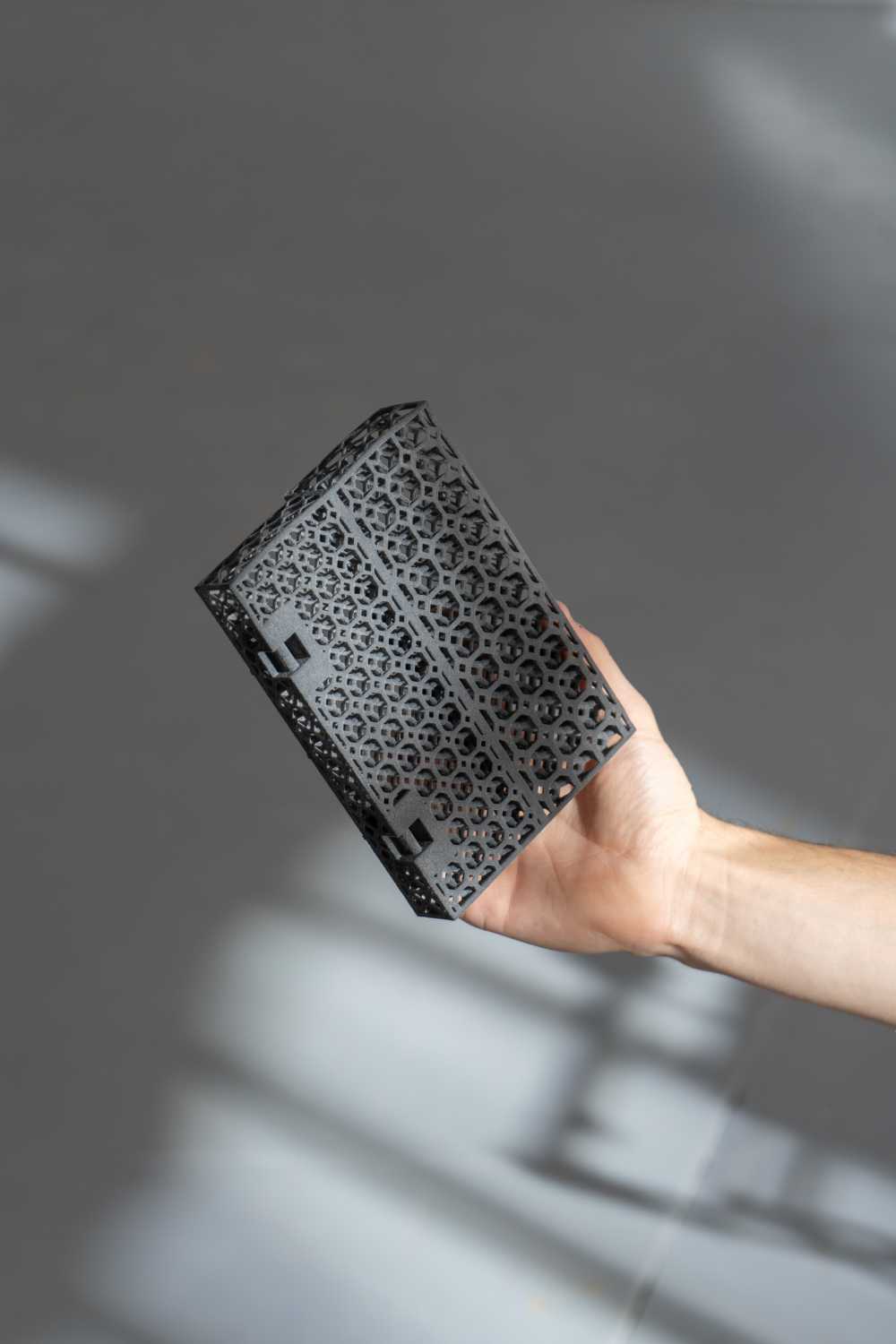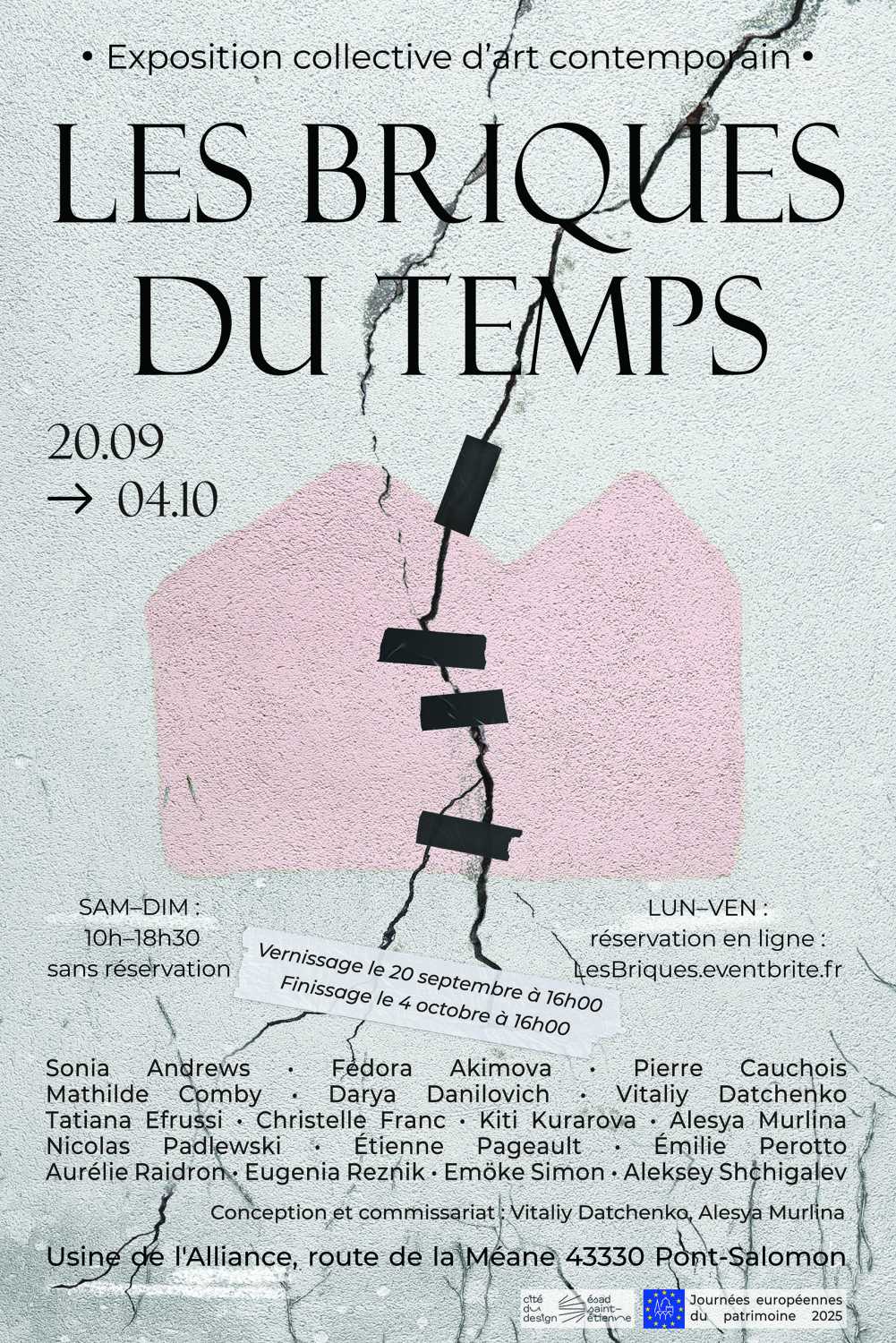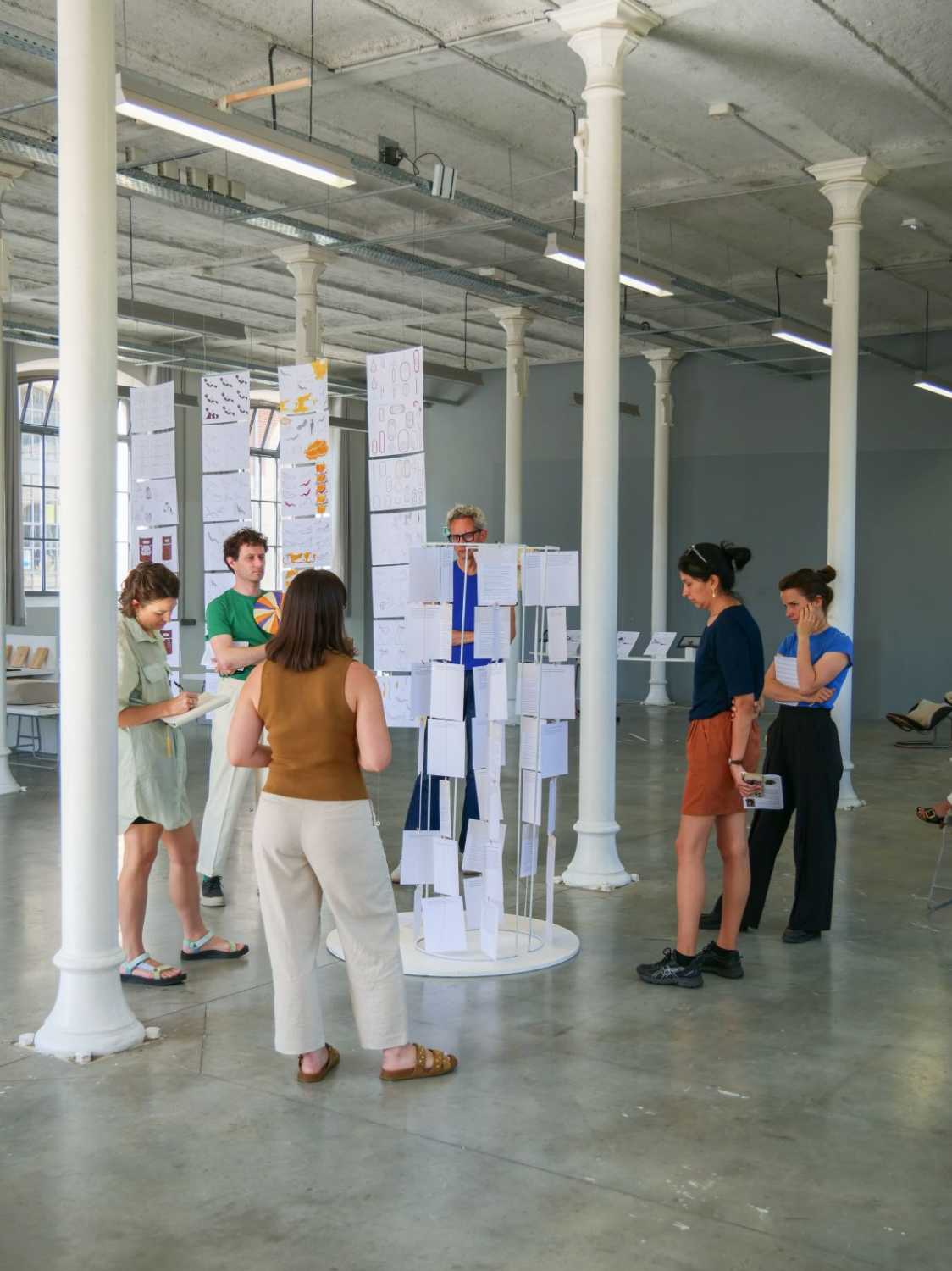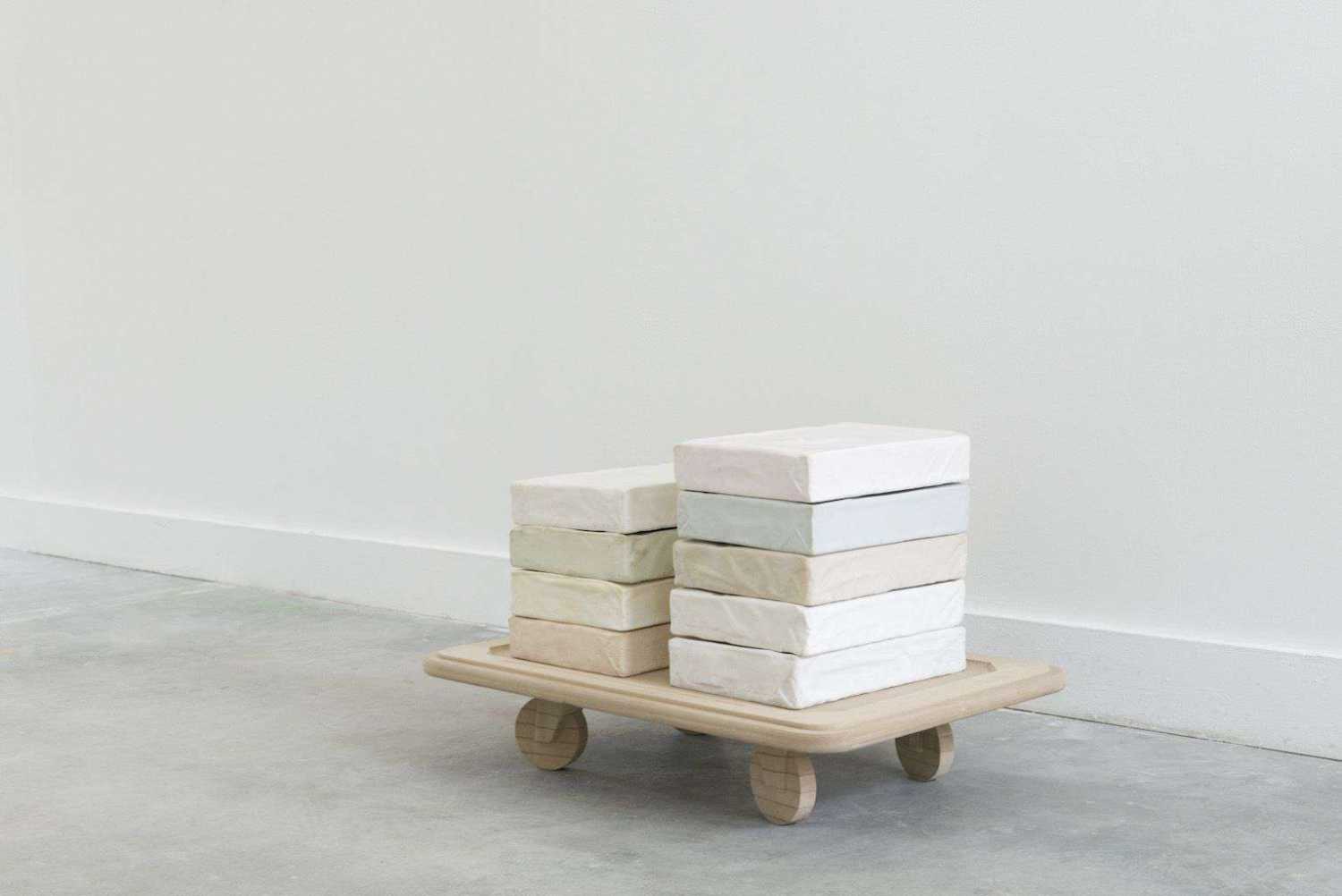Azimuts
Research Art Design n°59
Graphisme(s): Transmitting gestures, tools, thoughts and practices today
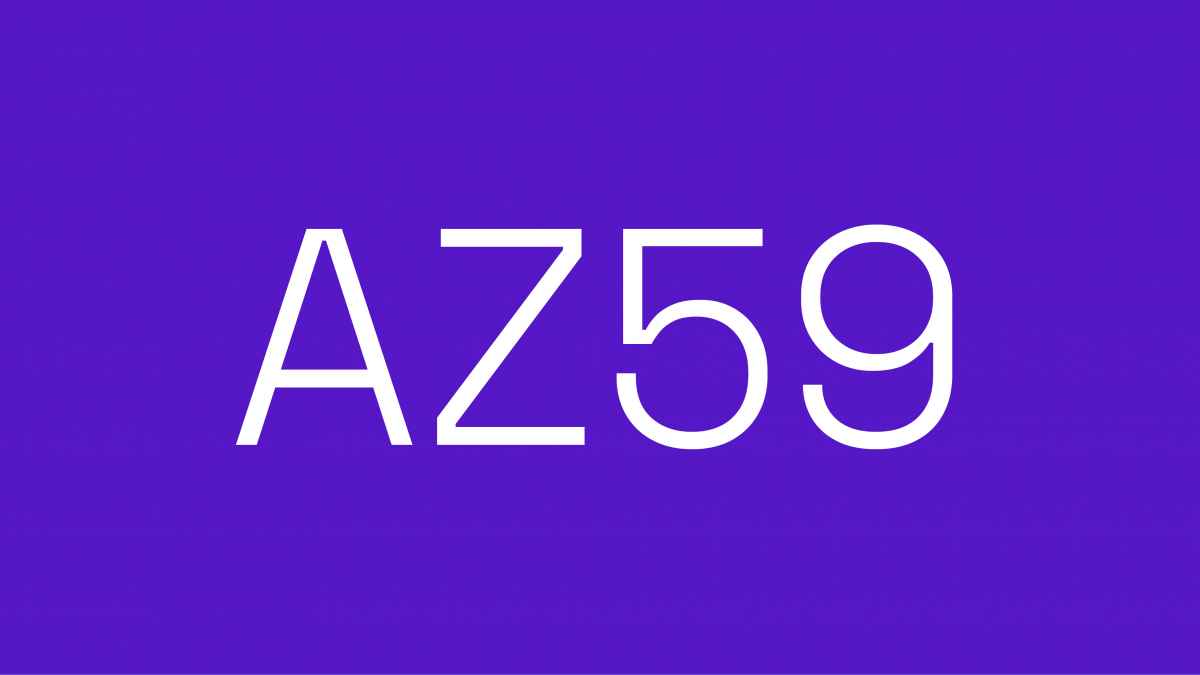
Azimuts- Research Art Design devotes its 59th issue to contemporary forms of transmission of graphics.
Issue no. 59 of Azimuts, commissioned from the IRD (Images-Récits-Documents) laboratory, is about graphic design and, more specifically, the ways in which it is passed on or conveyed. The notion of transmission is at stake, in the present but also in time and space, undoubtedly because there is a journey to be made. The environments in which transmission takes place need to be questioned, as well as its verticality. Why not rehabilitate sharing and communication, and take into account the social environment of visual productions? Signs, text and image obviously play a part in shaping the modes of visibility or invisibility that graphic design goes through. By examining the technical, manual, mechanical and digital tools used in a system of inscription, as well as the learning processes involved in acquiring the graphic gesture, what possibly turns this act into a praxis may be grasped. Graphic thinking may be at work in the practice of graphic design, perhaps because it is already informed in many individual and collective teaching and didactic situations. Ultimately, the agentivity of graphic design is first and foremost what operates on the identity of the writing subject.
Contents
under construction
Editorial
Assumptions
1_Graphic design is the territory of any inscription, or graphein.
2_By inscription, what is meant is anything taking place, in force, in counter-relief, in a material or a surface, material or immaterial.
3_The inscription is the result of a gesture, a passage, an action; it produces traces as well as signs.
4_The sign produced by the inscription may be intentional or unintentional.
5_The inscription is always a production of form, it is also a production of meaning; it may be detected, it may be read. When there is sense, there is a receiver of the sensitive.
5_1_Graphic design is undoubtedly present at the edge of the cosmos, even if it is not available to our perception. Even invisible, an inscription is still graphic design.
6_Graphic productions come from various types of movements. More or less elementary, more or less complex, more or less technical.
6_1_The inscriptions can be assembled – as in an arrangement – but they are inscriptions all the same.
7_Inscriptions are the consequences of gestures, tools, practices, thoughts.
7_1_There is nothing necessary for graphic design to happen, except that it is a consequence of a singular movement.
8_Inscriptions can be organised into systems of inscription. Each of these registration systems has its own strategies, lexicons, grammars, forms of agency, messages, modes of appearance.
9_In human societies, graphic design can be used as a communication tool. It is both a necessity for the temporal and spatial cohesion of societies, and it is also an instrument for organising the world. This responsibility requires great vigilance regarding its evidence, its productions, and its modes of extension.
9_1_As a means of communication, graphic design conveys messages. As a medium, it will also be necessary to picture it as a message.
10_Before being an activity for experts, graphic design is everyone’s business.
11_Graphic design is a mode of communication and transmission; it is logical to question both its modes of transmission and communication.
12_The multiplicity of coexisting graphic forms, engaging individual or collective, expressive, minor or hegemonic practices and uses, makes it possible to imagine that these multiple systems of inscription each have their own mode of existence, genealogy, processes of replication or transmission.
13_The transmission of graphic design (TGD) concerns both the learning of writing among the youngest, graphic practices that involve the body and space in school contexts, as well as the practical and conceptual teaching of graphics or graphic design within creative schools or any other educational institution operating in the fields of art and design, whether official or alternative.
13_1_Exercises, projects, manuals, treatises, courses, kits, workshops... are all links of knowledge, objects of propagation and sharing of various forms of acquisition locally distributed and often spread out.
14_The TGD is also carried out beyond schools, through the sharing of knowledge, in self-taught or vernacular forms, revitalised by digital technologies, tutorials, networks, platforms.
14_1_It is even conceivable that, in the manner of Tarkovsky’s bell founder Andrei Rublev, graphic design can be rediscovered outside of a tradition or a transmission, depending on what could then be identified as emergency graphic design.
14_If there was such a thing as emergency graphic design, then its context should be clarified.
15_Without making it a postulate, one hypothesis will circulate 一 the transmission of technical gestures, manual know-hows, manufacturing, and mastery of tools can prove to be inseparable from conveying graphic design.
15_1_The modes of transmission of graphic design in Kafka’s In the Penal Colony, although they are radical, nonetheless illuminate the confines of the territories of inscriptions, as well as the diversities of message writers, with regard to all possible situations.
16_It will ultimately prove inevitable to draw up a genealogy of the modes of transmission, the gestures of transfer, the situations, in order to participate in the development of true didactics.
16_1_An anti-didactic approach may also be used.
Jean-Claude IRD-Paillasson
Authors
A graduate in Draphic Design in 2022 from the École cantonale d’art de Lausanne – ECAL (Switzerland), Aurélien Uberti is an independent graphic designer and printer, as well as a self-taught researcher whose practice revolves around the investigation of language through books, posters, installations, and research (published notably on Lineto, MacGuffin, and soon on Source Type). His field of research extends from the definition and integration of spelling standards to attempts to emancipate yourself from them.
Charles Gautier teaches the history and theory of Graphic Design at the École supérieure des beaux-arts de Bordeaux. He is also an associate researcher at Canthel – Centre for Cultural Anthropology at Paris Cité University, and a member of the Mémoire-CNRS research group.
Eloïsa Perez is a graphic designer specialising in editorial design (www.eloisaperez.fr, @eloisaperez). She graduated from the National School of Decorative Arts of Paris – ENSAD (in Multimedia Graphic Design) and CELSA Paris (in information and communication sciences). She holds a PhD from Sorbonne University (GRIPIC laboratory, Concepts and Languages doctoral school) and from the National Typographic Research Workshop (ENSAD Nancy). She is also a professor of Artistic Education at HEAR in Strasbourg, based in Paris in modern language 1 (French, Spanish) and in modern language 2 (English, Italian).
Elsa Aupetit is a graphic designer, editor and teacher. She co-founded the graphic design studio Kiösk with Martin Plagnol. Their practice is mainly in the cultural field. They also founded the independent publishing house Dumpling Books, dedicated to visual and graphic arts. Elsa Aupetit shares her professional practices with teaching and pedagogy in different art schools, including ENSAD, since 2021, and the Campus Fonderie de l’Image, since 2016.
Benoît Montigné is a digital creator, researcher and teacher. He works with artists, designers or cultural institutions. He holds a PhD from the University of Paris 1 Panthéon-Sorbonne in Plastic Arts, Aesthetics and Art Science, associated with the ACTE Institute (Arts, Sciences, Societies axis), and conducts research-creation on the relationships between image and sound in art in the digital age. He has taught Interactive Design and Creative Coding at ENSAD Paris since 2005.
Structure Bâtons is a duo of graphic designers focused on social design, founded in 2014 by Lucile Bataille and Sébastien Biniek. Their projects explore the frontiers of graphic design by integrating pedagogy, editorial practices, exhibition curating, scenography, the practice of open workshops, the creation of graphic tools or character design. Through teaching, collaborations and residency formats, they deploy research work focused on individuals, their modes of existence, their folklore, their visual constructions.
Lucile Olympe Haute is an artist, teacher and researcher at the University of Nîmes and ENSAD in Paris. She studied the digital future of books and publishing, founded the web-to-print Library collection and coordinated the design of the collaborative tool Bookolab which allows publications to be edited and formatted for different reading media.
Quentin Juhel is a graphic designer. He uses free or open source tools. He teaches at the Higher School of Art and Design – ESAD in Valence and co-founded the Web-to-print Library. He is a member of the PrePostPrint, Atelier Téméraire, and Velvetyne collective groups.
Manon Ménard is a graphic designer, illustrator, and she holds a PhD in Design. Her thesis, carried out within the PROJEKT laboratory (UPR) at the University of Nîmes, uses critical perspectives to question the concept of inclusion and questions the ways of doing design for, by, and from autistic people in an educational context. Since 2019, she has taught a Design, Prospective et Société degree at the University of Toulouse – Jean Jaurès. She is also an associate member of laboratories PROJEKT (UPR) and LLA CREATIS (EA 4152).
A graduate of the Higher School of Art and Design, she joined the graphics team of the design research journal Azimuts for a period of two years. At the same time, she began working as a graphic designer and founded, in 2013, the micro-publishing house Bernadette Éditions. Since then, she has developed research on the South Korean graphic and printed environment (hangeul, jikji, hanji, etc.), but also on cultural and heritage elements of cities and countries she visited during her participation in several illustration fairs and/or workshops given in art schools.
A graduate from Paris 8 University in Plastic Arts in 2017 and
Beaux-Arts de Lyon in Editorial
Graphic Design, from DNA in 2019 then from DNSEP in 2022, Gabriela Simon Flores
is interested in language and its relationship with moving images, in the
transition between poetry, art, typography, and graphic design. She has worked
with several artists and designers on various projects, including
publishing and
setting up exhibitions.
She went back to
university in 2023 as part of a Master’s
degree in research around the question of the expanded role of the graphic
designer as an editor, author and producer, and continues her work as an
independent graphic designer. She also does more personal editing, video, and
writing work.
Currently, she is a research student
at the Saint-Étienne Higher School of Art and Design. –
Esadse. She works in France and
Ecuador, always oscillating between Spanish, French, and English.
Pauline Aignel is a graphic designer and researcher. She is conducting research around the question of creative processes in graphic design and is also interested in printing methods such as screen printing. She graduated from ESAD from Amiens in 2023 and then joined the Azimuts post-master at Esadse.
Philippine Garsuault is a graphic designer and researcher, graduated from the Higher School of Graphic Art – ESAG Penninghen in Artistic Direction in 2023. She is conducting research in graphic design around natural structures. She is interested in the idea of experimenting – and graphically transposing ecosystems. She has developed an interest in digital tools, somewhere between (stealth) typography, (curious) networks and (sensitive) biology. She started a research residency at Bel Ordinaire in May 2025 and concluded two years of post-graduate research.
Jiajing Wang is a graphic designer, artist and researcher in the fields of hybrid publishing and experimental image. She is also the founder of the independent publishing house Fruit Salad Press. A graduate of ESAD des Pyrénées (Pau), she is pursuing the Graphic Design Research Azimuts post-master’s degree (2023-2025) at Esadse.
Sandrine Binoux is a French photographer born in 1976 in Lyon. She lives and works in Saint-Étienne where she teaches photography at Esadse. www.pinholeproject.fr
Fabrice Gibilaro graduated from the
Beaux-Arts of Saint-Étienne. Today, he works
as an agricultural worker and independent graphic
designer.
www.f-gibilaro.fr
Jean-Claude Paillasson is a graphic designer and teacher at Esadse, where he is responsible for the IRD (Images-Récits-Documents) GRAD-ESADSE research laboratory. He is also the collection editor (Mini-Brut, W, Imagénéiser, 48CC, Codex-atlas) as part of the IRD and Images Library 105/150 GRAD-ESADSE. He is a member of LabEx IMU (Intelligence des Mondes Urbains).
Vivien Philizot is an HDR lecturer in Visual Arts at the Faculty of Arts at the University of Strasbourg, where he co-heads the Master’s Degree in Public Environment Design and heads the Visual Arts department. He taught in the Visual Didactics department of the Haute école des arts du Rhin in Strasbourg, as well as at the Haute école d’art et de design de Genève (HEAD), and worked for several years in the Poste 4 graphic design workshop. His teaching and research activities lie at the crossroads of the fields of graphics, visual studies, and epistemology. He is a member of the Contemporary Approaches to Artistic Creation and Reflection research team – UR 3402 – University of Strasbourg, and of the Visual Cultures research group, which he co-founded in 2018. He is the director of the “Milieux” collection, published by Deux-cent-cinq. He is the author of several books on images and graphic design, including Images premières. Aux origines de la représentation visuelle (Metis Presses, Genève, 2023), Qu’est-ce qu’une image dans l’espace public ? (éditions Deux-cent-cinq, Lyon, 2022), Technique et design graphique. Outils, médias, savoirs (with Jérôme Saint-Loubert, éditions B42, Paris, 2020).
Yann Aucompte holds a PhD in Aesthetics and Arts Science, he is a member of the Arts Écologies Transitions collective and a teaching professor in Design and Artistic Crafts as part of the DNMADe Graphics, book and publishing design and the Scientific Narration and Mediation diploma through graphic design and illustration at the Jean-Pierre-Vernant high school (Sèvres).
Antoine Châtelet is a teacher in philosophy, design and film, documentary-maker in the framework of the DNMADe Graphics, book and publishing design and Scientific narration and mediation through graphic design and illustration at the Jean-Pierre-Vernant high school (Sèvres).
Damien Laverdunt is an illustrator and graphic designer, author of documentary books, member of the Tigres-Gauchers. He is also a teacher in DNMADe Graphics, book and publishing design and Scientific narration and mediation through graphic design and illustration at the Jean-Pierre-Vernant high school (Sèvres).
IRD (Images-Récits-Documents) Lab
This issue is carried by the IRD (Images-Récits-Documents) research team at the Saint-Étienne Higher School of Art and Design. IRD is a place of research whose axes articulate practice and theory around the economies of the image, territorial stories and territories of graphic design.
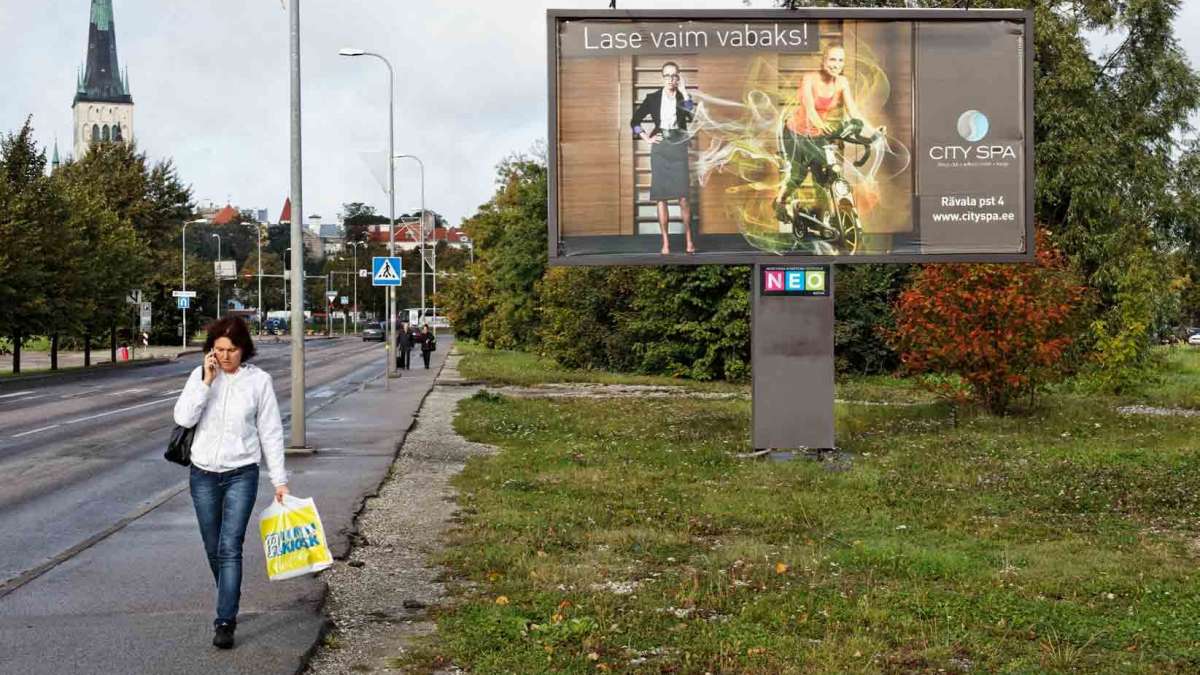
Technical elements

Distributor and broadcaster: les presses du réel
Publisher: Cité du design - Esadse
Publication: May 2025
Language: English
Format: digital pdf
Pages: pages
ISSN : 3077-3253 . 59
ISBN : 9782492621291
Price : 8€99
Availability
Contact
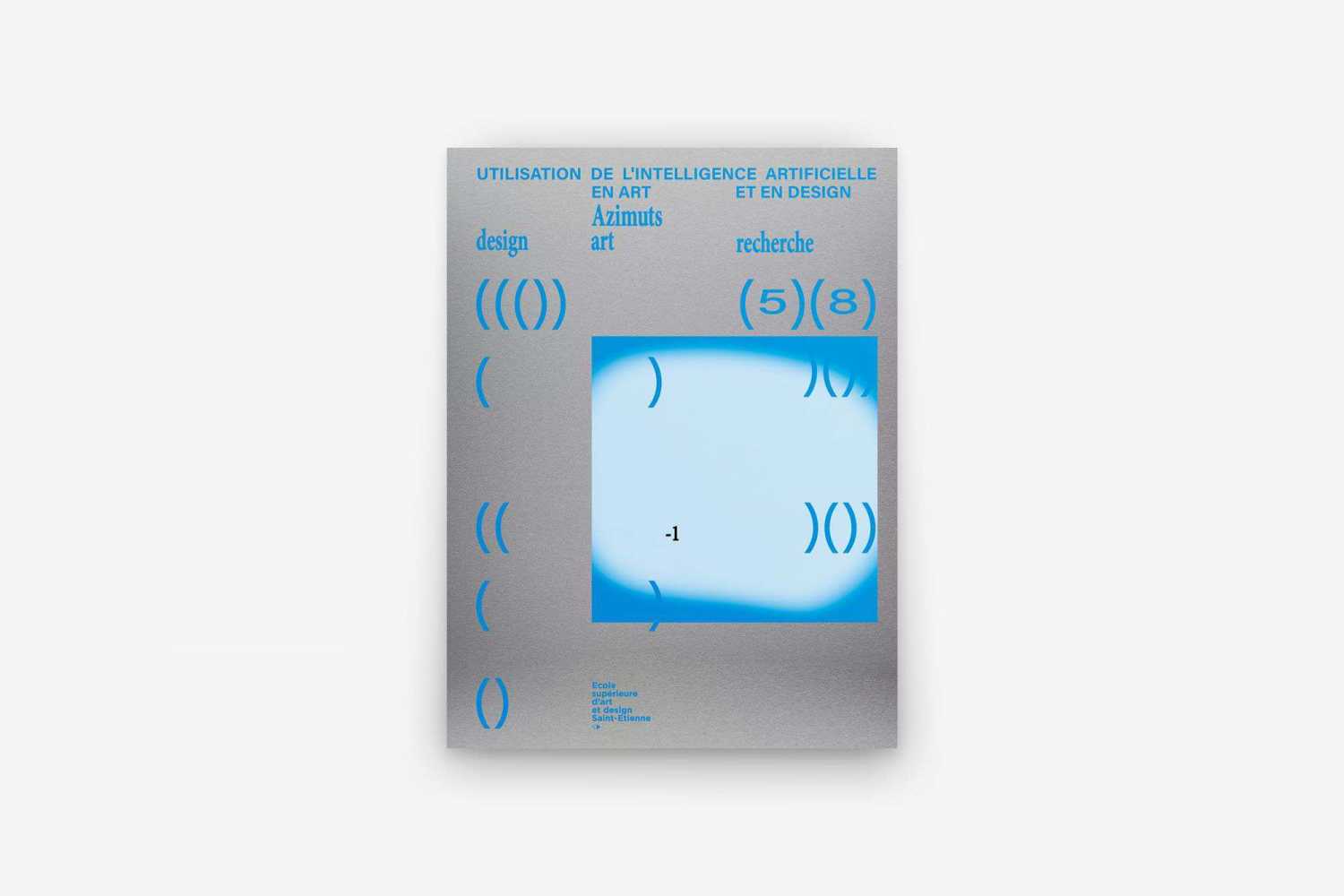

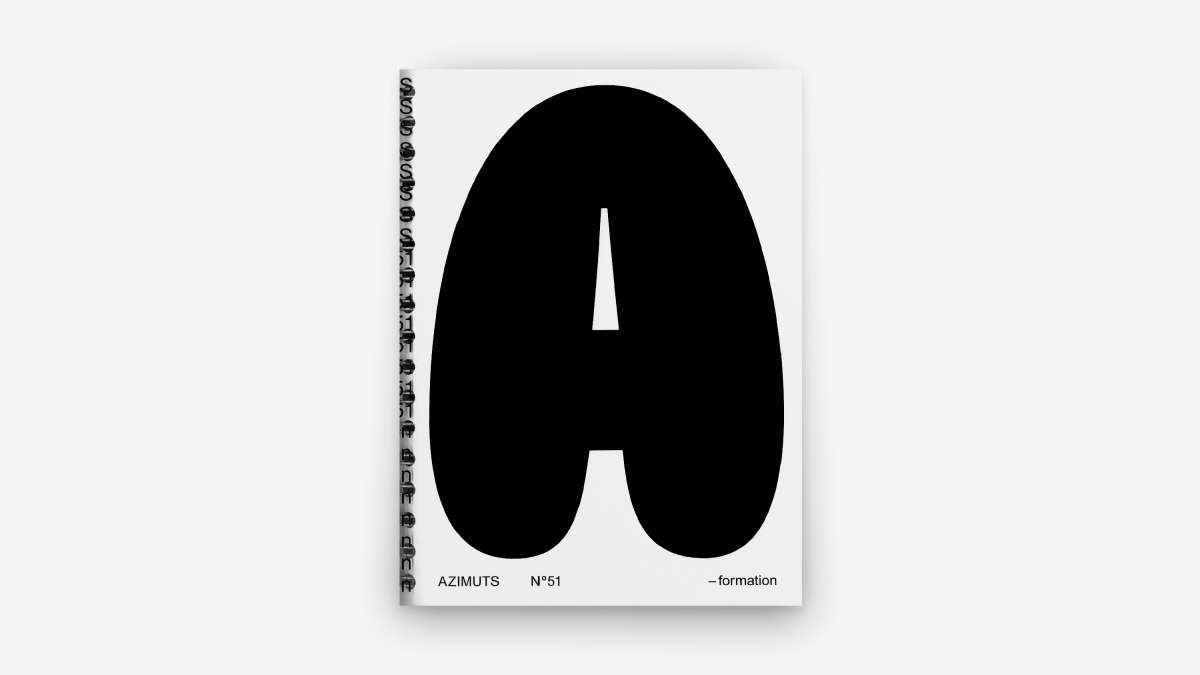
Votre navigateur est obsolète, l’affichage des contenus n’est pas garanti.
Veuillez effectuer une mise à jour.
